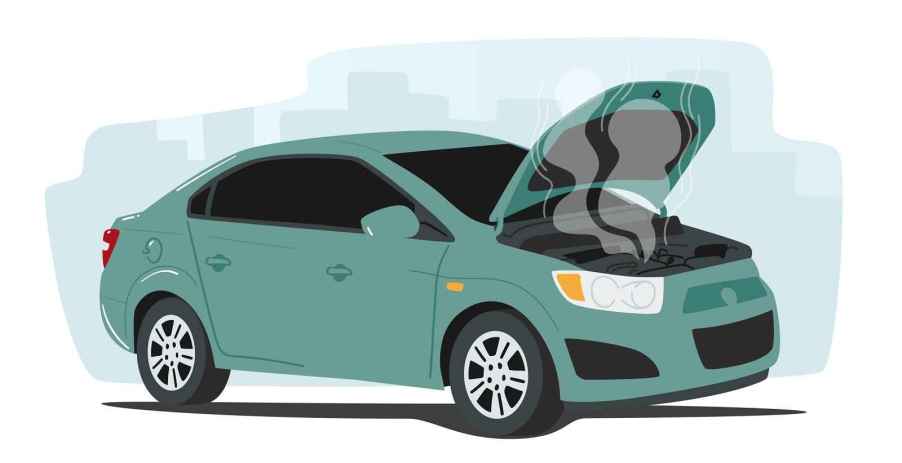
Here’s What to Do if Your Car Starts Overheating
Steam, a strange smell, and a rising temperature gauge are all signs of engine overheating. If any of these things occur while you’re driving, there are specific steps you need to follow. Here’s what to do if your car starts overhearing.
Stop driving
The most critical step is to stop operating the car. Find a safe place to pull over. If you keep driving at higher-than-manageable engine temp, you might very well cause more damage than the original issue. This is because your car is designed to operate under controlled, optimal temperatures. If the engine gets too hot, gaskets and seals will breach, and plastics and metal will warp. You can very easily move from, say, a simple coolant leak from a little rubber hose to an incredibly expensive engine repair or replacement. If internal components get ruined from excessive heat, many folks end up stuck with a huge repair bill at best or, at worst, are saddled with finding a new car, plus paying the loan balance on the damaged car.
If you aren’t comfortable trouble-shooting, call for a tow
Once you’re pulled over safely, you have a couple of options. If you don’t feel confident looking into the overheating issue or seeing if you can figure out a way to drive somewhere to make repairs, no worries at all. Cars are complex, and it’s hard enough to handle the stressors of being confronted with an unexpected mechanical issue. Call for a tow, and be sure to stay in a safe zone while you wait. This might mean getting back into your car, or you might have to wait elsewhere.
If you feel capable of checking some components, read on.
Check your coolant
When running, engines create incredible heat. Too much, in fact, for many components to handle. Coolant, or antifreeze, helps your engine maintain optimal operating temperature. Since this is a closed system – meaning coolant recirculates around and inside your engine repeatedly, low coolant is never normal and causes overheating. Pop your hood. Visually inspect the plastic coolant tank. Some are about the size of a milk jug, while others are smaller. It should be labeled and might have a “wavy water” icon on it. If it’s low or dry, you could have a leak or high system pressure could cause some fluid loss.
Another way to check coolant is at the top of the radiator. There’s a small metal cap there. Wait until your engine has cooled to a safe temperature before removing the radiator cap. If you open the radiator while hot, you can suffer steam burns.
If the coolant is low, you can fill it to spec. There should be a min and max fill line on the plastic tank. If you don’t have coolant and it’s not below freezing outside, you can use plain water temporarily.
Now, if the coolant or water just pours out, you can look around and see where the fluid is leaking. If fluid dumps on the ground immediately, check for detached or split hoses. These are relatively easy to replace since it’s just a rubber tube and hose clamps.
Don’t drive the car if you can’t spot and fix an obvious issue. Driving during rapid fluid loss will quickly cause overheating.

When to justify driving a car with an overheating issue
If the antifreeze is already full, or you’ve filled it and can’t see anything leaking badly, wait until the car is fully cooled off. Then, you can attempt to drive the vehicle conservatively.
I say this because there are cases where you can observe various conditions and decide that a short drive won’t likely cause additional damage. For instance, if the coolant leak is very small and has taken a good while to leak to a low coolant level, the fresh coolant you installed will likely stay at a good level while you make your way home or to a repair facility.
In cases where the vehicle already has full coolant, there could be a condition that would require diagnostic tools to address. Examples are a malfunctioning fan assembly, a faulty thermostat, or even a breached cylinder head gasket. You can turn the car on and see whether the temp gauge stays under the halfway mark. Pay close attention to gauge. As long as you aren’t getting a hot reading, you should be able to make it somewhere safer than the side of the road.
Of course, when in doubt, call for help. Remember that overheating and low coolant are never normal vehicle conditions and must be addressed, or you’ll risk severe engine damage.



